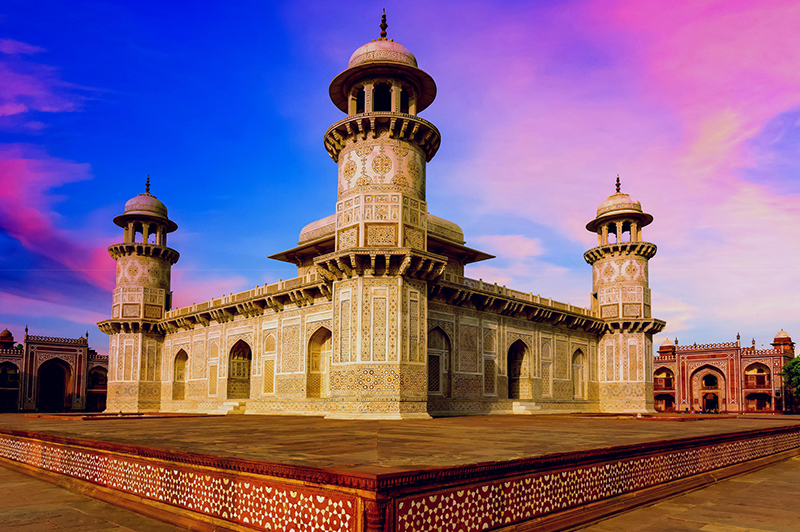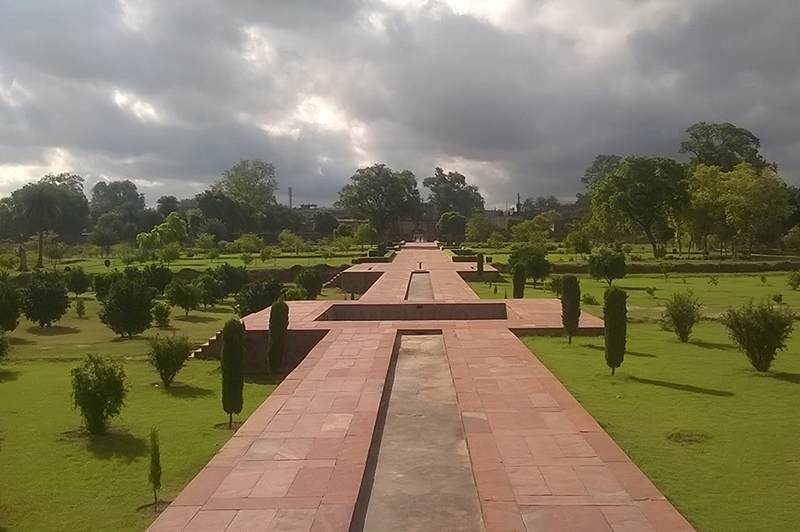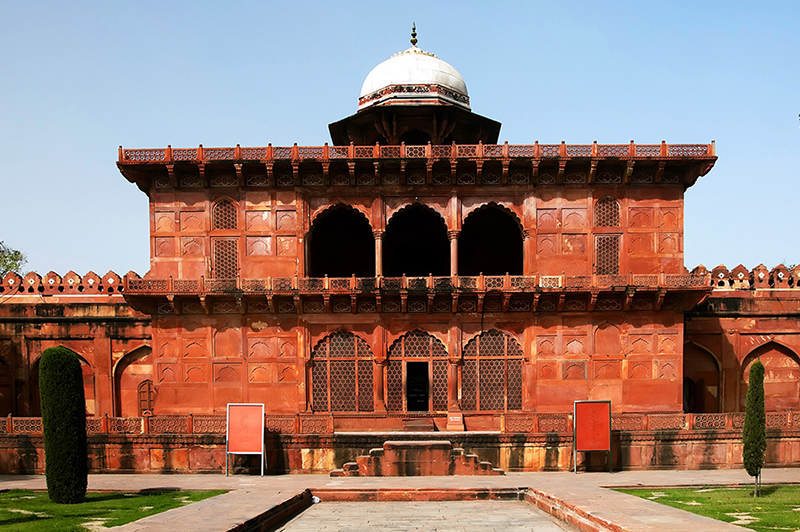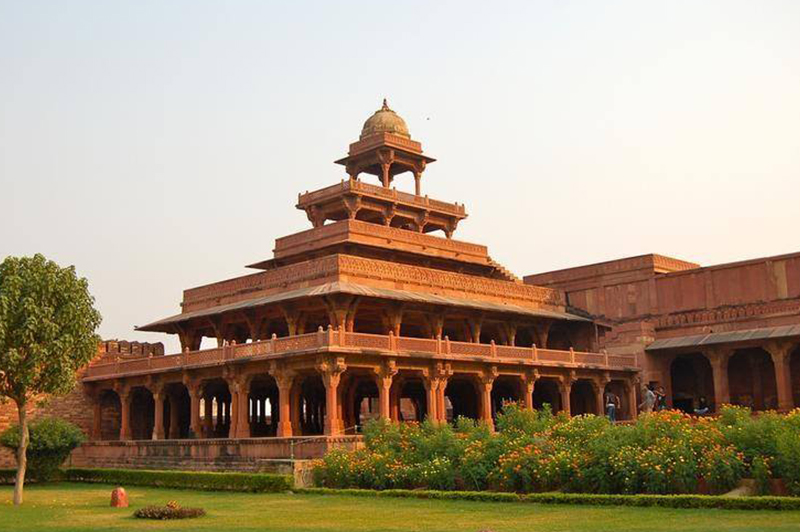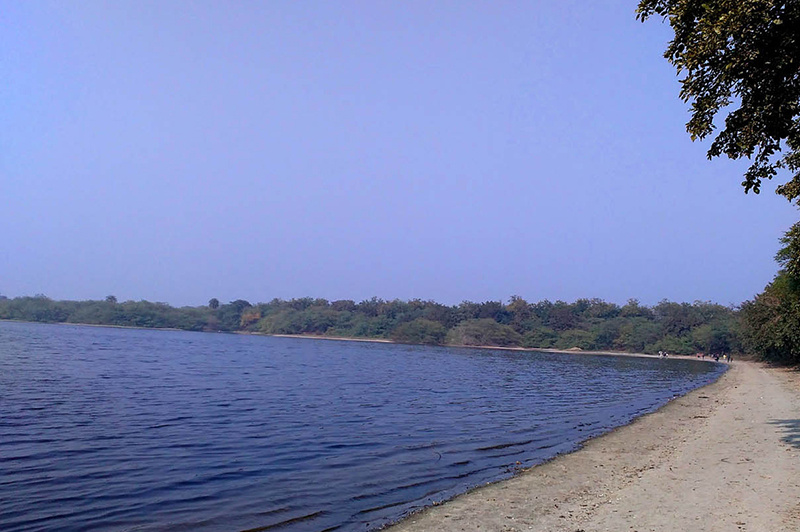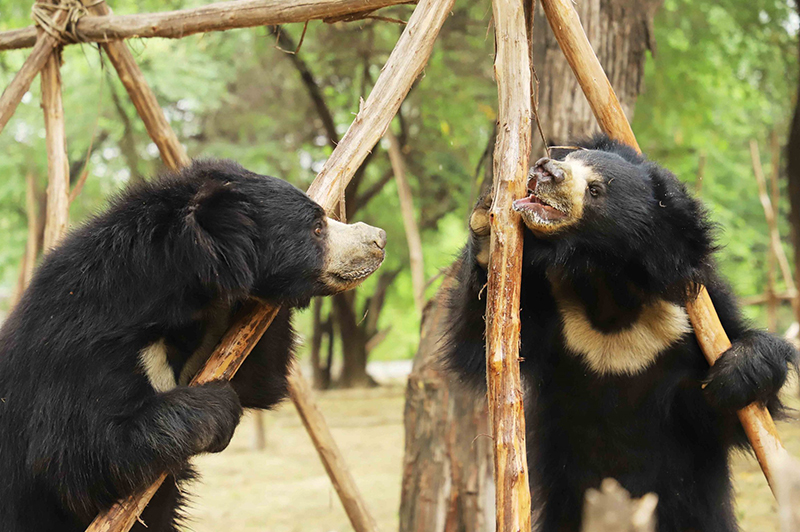
When it comes to Agra, there is no real need to sell it as the ‘city of love. The presence of the Taj and the love and romance associated with it automatically do the job. While the Taj Mahal quite literally is the single most attraction that makes visitors flock to Agra, it really isn’t the only one. In fact, there is more to do and much more to see if one is interested.
Agra was the capital and one of the most important cities during the times when the Mughals ruled over Hindustan. Sultans who came into power made their best contributions in erecting monuments to either dedicate in the memory of a loved one, commemorate an achievement, or mark their power. This way, Agra has got a load full of its share of historical monuments. Each of them still sustains its glory, beauty and sturdiness to still stay erect after so many decades. Agra is also not all about just monuments from the past. There are places like lakes and sanctuaries around Agra that you can visit on a good weather day.
Many people visiting Agra spend most of their time basking in the beauty of the Taj, forgetting that this place is full of other sites that can leave you in awe! Here’s a list of some majestic monuments and other tourist spots you can cover in your sojourn to Agra other than the Taj Mahal itself.
Tomb of Itimud-ud-Daulah
This tomb is a remnant of the Mughal era and is dedicated to Mirza Ghiyas Beg. It is located on the eastern bank of the Yamuna river and is adorned with brilliant architecture and elaborately carved jalis or window screens. Extremely delicate in appearance and architecture, it happens to be the first fully marbled structure built by the Mughals and, in fact, the first tomb on the banks of the Yamuna river made much before the Taj Mahal. This tomb is popularly called the ‘Baby Taj’, and because of its appearance and colour, it looks like a smaller replica of the majestic Taj Mahal; nevertheless, it has its own charm and elegance.
Location: It is located on the eastern bank of Yamuna river, Moti Bagh, Agra
Entry Fee: For Indians, there is a nominal charge of INR 10, and for foreigners, it is INR 110. You will have to pay INR 25 extra if you take a camera.
Timings: Visit hours are 6 AM to 6 PM
Agra Fort
Agra Fort is one of the finest Mughal Forts in India but somehow gets overshadowed at most times because of the popularity of the Taj. Made of Red Sandstone and on the banks of the Yamuna, the structure is a testimony to what the glory of the Mughal architecture stood for. Agra Fort is also titled a UNESCO World Heritage Site. Several Mughal emperors ruled for many years from this fort until it was shifted to Delhi in 1638. Emperor Akbar wanted this as the military base of the Mughal Empire, and it was successfully claimed as one strong military base in its time. Later, his son, Shah Jahan, as his successor, modified it by adding white marble structures to it. This fort makes a walled city and is made of red sandstone, so it is also called ‘Lal Quila of Agra’. It has four gates: Delhi Gate, Hathi Pol, Ghazni Gate and Amar Singh Gate. Taking a walk in and around the long corridors and other parts of the fort that magnanimously embrace structures like Bengali Mahal, Akbari Mahal, Jahangir Mahal, Shah Jahani Mahal, Machchi Bhawan, Diwan-I-Aam, Diwan-I-Khas, Khas Mahal and Sheesh Mahal will make you realise the grandeur of this enormous monument.
Location: The fort is about two and a half kilometres from central Agra.
Entry Fee: For Indian citizens, the entry fee is INR 50, and for foreigners, it is INR 550. Visitors from SAARC countries need to pay INR 90.
Timings: You can visit between 6 AM to 6 PM on all days of the week.
Ram Bagh
Made during the reigns of the first Mughal emperor, Babur, in 1526, Ram Bagh holds great historical value as it is the oldest Mughal garden in India. Another reason why this place holds importance is that the remains of Barbur were temporarily kept here before it was permanently taken to its resting site in Kabul. After a long time of its existence, it was also re-established by Nur Jahan, the wife of Janahngir, to retain the glory of the symbol of Mughal architecture and culture. The garden was initially known as Aram Bagh, which translates to the ‘garden for resting’. It was also known as Bagh-i-Gul Afshan and was built similar to the Charbagh pattern, where the entire garden is divided into four main divisions. These are separated by waterways and paths. The garden also features fountains and two pavilions. The lush greenery of the place is perfect for resting and enjoying after a long day of historical sightseeing.
Location: It is about 8 km from the Taj Mahal towards North on Firozabad Road, Near Aligarh Hathras Road.
Entry Fee: For Indian citizens, the entry fee is INR 20, and for foreigners, it is INR 250.
Timings: It opens between 6 AM to 6 PM on all days of the week.
Akbar’s Tomb
The story of the great Mughal emperor’s tomb starts with his efforts. Akbar started building his mausoleum while he was alive. He couldn’t complete the work, so his son, Jehangir, took charge and completed his father’s tomb after his death. When Akbar planned the tomb’s construction, he incorporated designs that would reflect many religions to complement his belief in respect for all religions and secularism. But Jehangir made many alterations to his original plan and changed structures keeping in mind the development of the Mughal architecture and designs. Akbar’s Tomb is in the area called Sikandra, the existence of which is credited to Sikandra Lodhi. When he acquired Agra, he built a fort, which was later surrounded by settlements, and came to be known as Sikandra. Akbar’s Tomb has four identical entrances representing the four major religions of Akbar’s time- Hindu, Muslim, Christian and Deen-e-Elahi (faith propounded by Akbar himself). The four-storied Akbar’s mausoleum is based on the pattern of the Panch Mahal of Fatehpur Sikri. It is 100 ft high and has four minarets. Made with red and white sandstones, this tomb is a remarkable piece of Mughal infrastructure.
Location: The tomb is located in the suburbs of Agra, in Sikandra, on the Mathura National Highway Road, NH2. It is which is about four km away from the central city.
Entry Fee: Indian tourists need to pay INR 20 as an entry fee, while SAARC country citizens and foreigners need to pay INR 15 and INR 200, respectively. Kids below the age of 15 need not pay any charge for entry. There is a separate cost of INR 25 for carrying a camera.
Timings: The tomb remains open from 6 AM to 6:30 PM.
Taj Museum
If you visit the Taj Mahal, you should also make it a point to see the Taj Museum. This place exhibits the collection of original Mughal artefacts, artworks and more. It is the perfect place to explore the preserved elements of the Mughal regions. The museum is comprised of three galleries. The first one is all about Calligraphic art. The Mughal emperor Shah Jahan loved calligraphy. To reflect it, the place has some of the best-carved jade articles, bowls, celadon dishes, lotus vases, porcelain items, etc., with calligraphic art of his times. The celadon utensils are of specific value as they would change colour if poisoned food were to be served in them. Towards the end, you will find Mughal daggers, swords and others on display. The second gallery is mainly covered with paintings of various sizes and shapes, made on different objects, especially of Shah Jahan and Mumtaz Mahal. The third gallery is all about the captured beauty of the Taj Mahal. You will find pictures and paintings of the Taj from different years and times. It also exhibits the record of different levels of construction of this mausoleum.
Along with these, you can also find the gold and silver coins of the Mughal era, which were minted in Akbarabad. The place is also full of many more items related to the information on the Taj Mahal, its building process and the raw material used. This place is heaven for Taj Mahal fans. So if you are a history geek, you will love this place.
Location: The museum is located inside the Taj Mahal complex, on the west of the entrance of the Taj Mahal.
Entry Fee: There is no separate fee to enter the museum. Entry ticket to the Taj includes the cost of a museum visit.
Timings: Museum remains open from 9 AM to 5 PM. It is open on all days of the week except Fridays.
Panch Mahal
The structure gets its name from the fact that it is a five-storey building commissioned by Akbar, the great in the memory of the great Sufi saint Salim Chisti. It was constructed as a leisure and pleasure palace for the queens and princesses. It was also called badgir or wind tower. The place was used as a place to relax in the cold wind from the hill. The place is based on the open-sided theme and so has open walls that let wind pass through. This red stone palace comprises five pavilions aligned, one on top of the other. The ground floor has 84 pillars and the largest Pavillion. The size of the hall and the number of pillars keeps decreasing till it reaches the fifth with just four pillars, the chhatri. Each floor is connected with a flight of stairs. The pillars were earlier linked with jallis, which allowed the wind to pass and also served as a screen for females to stay hidden yet enjoy the view and cool breeze.
Location: Panch Mahal is in Dadupura, Fatehpur Sikri.
Entry Fee: There is no fee to enter the premises.
Timings: It stays open from 7 AM to 6 PM.
Jama Masjid
Jama Masjid is another masterpiece from the Mughal times. The architecture is so beautiful that it is sometimes compared to the heavenly masjid called Baitul-Mamur. Built in 1648 AD, Shah Jahan commissioned it for his daughter Jahanara Begum. This majestic mosque is one of India’s biggest mosques and is the most visited site in Agra. Its enormity is proved by the fact that it took around six years and required 5000 workers to complete the structure. The architecture is made of red sandstone and marble and has a large courtyard with a beautiful fountain. People visit here out of faith, interest, history, and love for ancient architecture.
Location: The mosque is situated right opposite to right opposite to the Agra Fort Railway Station and around 4.5 km away from Agra Cantonment.
Entry Fee: It is a place of worship; hence, it is open to all without any charge. But you might have to pay a nominal charge of INR 30 for still photography.
Timings: You can visit Jama Masjid from 7:00 AM to 12 Noon and 1.30 PM to 6.30 PM. But the mosque remains closed on Fridays for non-Muslims.
Keetham Lake
Agra is not all about historical monuments. There are picturesque spots like Keetham Lake, where you can enjoy nature and further build memories of Agra. This beautiful natural lake is also known by the name Sur Sarovar and is a part of Sur Sarovar Bird Sanctuary. This pentagonal-shaped lake is a hub for migratory birds of over 105 species, including Purple Heron, Night Heron, Indian Reef Heron, Grey Heron, Black Necked Stork, White Iblis, Common Teal, Paddy Birds, attle Egrets, Large Egrets, Smaller Egrets, Comb duck, Little Grebes, Cormorants, Pintail and so many more, so bird watching is one activity you can do other than simply enjoying the view and having a picnic with family and friends.
Location: The lake is near Anand Engineering College in Kuntha, on the Agra Delhi Highway. It is about 20 km from Agra and 12 km from Sikandra.
Entry Fee: There are no charges to visit this natural spot.
Timings: You can visit the lake from 6 AM to 6 PM.
Agra Bear Rescue Facility By Wildlife SOS
Coming to the next destination for nature lovers is the Agra Bear Rescue Facility By Wildlife SOS. This is the largest Sloth bear rescue facility in the world. It is the initiative of Wildlife SOS in alliance with the Uttar Pradesh Forest Department, where they have rescued sloth bears from brutal bear dancing practice and made a home for about 200 bears. One can take a tour provided by SOS as a conservation educational visit and interaction with bear experts. At this place, you can experience close meetings with the bears, a personal guided tour and a video presentation about bear conservation.
Location: In Sur Sarovar Bird Sanctuary,
Entry Fee: The Forest Department charges a sum of INR 50 from Indians and INR 500 from Foreign Nationals. All the collection goes to support the bears.
Timings: The facility remains open from 9 AM to 6 PM.
Dolphin – The Water World
Now, if you are exhausted with the regular touristy visits to the monuments of Agra, Dolphin Water World is the place to be, especially if you visit during the summers. It is one of the most loved water parks in the city. The park is full of rides and activities that are fun and exciting. From wave pools to high slides to multi-lane slides. The place is full of things to do that will keep you occupied for a full day with your family and friends. Along with water activities, the site also has an amusement area where you can have some exciting rides. If you are travelling to Agra with kids, this place is a must-visit spot.
Location: Runkuta, Mathura Road
Entry Fee: The charges are INR 650 for adults and INR 500 for kids below 4 feet in height.
Timings: The place is open for all seven days from 11:30 AM to 6:00 PM. +


